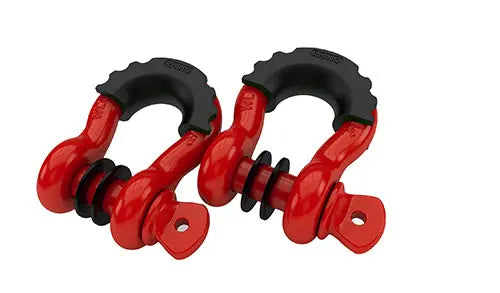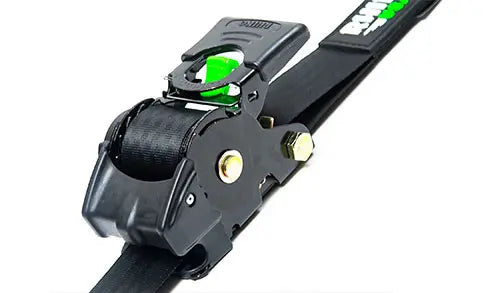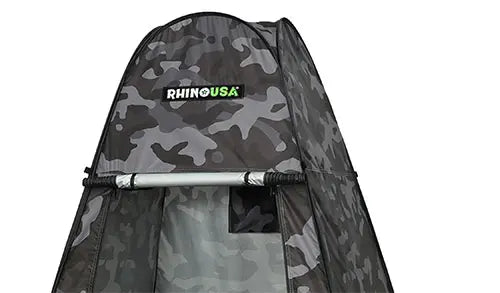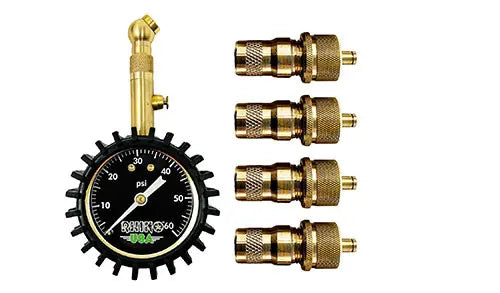Proper load securement is critical for ensuring the safety of everyone on the road. When loads are not properly secured, they can shift during transit, leading to accidents that may cause injury or even death. To help you navigate these risks, we have created the ultimate load securement checklist for 2024.
Unsecured loads are not just a hazard to the driver but to all road users. They can result in fines, legal consequences, and significant damage to cargo and vehicles. Understanding and implementing effective load securement practices is essential for safe and efficient transportation.
This checklist covers all vital aspects, from using straps, chains, or webbing to proper cargo placement and covering loose materials. With these guidelines, you can ensure that every journey is a safe one, protecting both your cargo and the people around you.
Pre-departure Checks
Vehicle and Trailer Readiness
Before embarking on any journey, ensure your vehicle and trailer are in optimal condition. Inspect brakes, checking for wear and ensuring they respond properly. Examine tires for appropriate pressure, tread depth, and any signs of damage. Verify that all lights—including brake lights, signal lights, and taillights—are functional.
Cargo Preparation
Effective cargo preparation reduces the risk of accidents. Confirm the weight distribution is balanced, with heavier items placed at the bottom to maintain stability. Secure all fragile items with adequate padding to prevent damage. Use tie-downs, straps, and other securing devices to keep the load firmly in place.
Make these checks a routine part of your pre-departure process to ensure a safe and efficient journey. This attention to detail demonstrates commitment to best practices in load securement.
Choosing the Right Tie-Downs
Selecting the correct tie-downs is crucial for safe and secure cargo transportation. The right choice depends on the weight and type of your load, as well as compliance with industry standards.
Types of Tie-Downs:
-
Webbing Straps: These are versatile and come in various lengths and strengths. They are ideal for general-purpose securement.
-
Chains: Typically used for heavy-duty loads, chains offer high strength and durability.
-
Binders: Used in conjunction with chains, binders ensure the chains remain tight.
When choosing tie-downs, pay attention to the Working Load Limit (WLL). The WLL must be adequate for the weight of your cargo to ensure safety.
Evaluating Tie-Downs:
-
Condition: Regularly inspect for wear and tear. Replace frayed straps, damaged hooks, or weakened components immediately.
-
Strength: Ensure tie-downs are rated to handle the load’s weight. The combined WLL of all tie-downs must meet or exceed the cargo weight.
Practical Tips:
-
Consistency: Use tie-downs of similar materials and ratings for uniformity.
-
Adjustment: Opt for adjustable tie-downs like ratchet straps when varying load sizes.
-
Certification: Use certified tie-downs that meet industry standards for added reliability.
Working Load Limits (WLL):
| Type |
Typical WLL (lbs) |
| Webbing Straps |
500 – 10,000+ |
| Chains |
1,000 – 20,000+ |
| Binders |
Varies by chain type |
Ensure you choose tie-downs with a sufficient WLL to match the cargo requirements accurately. This ensures stability and safety during transportation.
Securing Your Load
When transporting a load, it is vital to ensure all items are properly secured to prevent accidents and injuries.
Start with identifying anchorage points. These are secure points on your vehicle or trailer where you can attach tie-downs. Common anchorage points include hooks, rings, and rails built into the vehicle’s structure.
Next, use proper securing techniques.
-
Tie-downs: Choose high-quality tie-downs such as ratchet straps, ropes, or bungees. Attach them to the anchorage points, ensuring they are tight and evenly distributed to prevent shifting.
-
Cribbing: Place wooden or synthetic blocks under items to create a stable base. This is especially useful for heavy or irregular-shaped cargo.
-
Bracing: Install braces or barriers along the edges of the load. This helps in preventing lateral movement during transport.
-
Blocking: Use blocks to fill gaps between cargo items. This adds stability and reduces the risk of items moving independently.
For optimal security, inspect your load before departure. Verify that all tie-downs are tight, cribbing is in place, and braces are secure.
Remember, the Federal Motor Carrier Safety Administration (FMCSA) requires that cargo does not shift, ensuring the safety of all road users. Proper load securement isn’t just a legal obligation but a critical safety practice.
Post-trip Inspections
Post-trip inspections are essential for ensuring your vehicle and load are safe after a journey. These checks help identify and address any issues before they cause significant problems.
Tie-Downs: Check all tie-downs for wear and tear. Look for frayed, cut, or damaged straps and chains. Inspect buckles, hooks, and ratchets to ensure they are functioning properly.
Re-Tightening: If you notice any slack in the tie-downs, re-tighten them. Vibrations and movements can cause tie-downs to loosen during transit. Securing them properly ensures the load remains stable.
Exterior Checks: Conduct a walkaround of the vehicle. Look for any visible damage such as dents, scratches, or cracks. Ensure all lights, including headlights, taillights, and turn signals, are working.
Tires: Inspect the tires for proper inflation and any damage. Check for cuts, punctures, or signs of wear that might affect their performance.
Mechanical Components: Examine critical components such as brakes, the horn, and mirrors. Ensure the brakes are responsive and the horn is operational. Verify that mirrors are clean and positioned correctly.
Documentation: Note any defects or issues found. According to regulations, 49 CFR §396.11, you must prepare and submit a report if defects are discovered. Addressing these issues promptly ensures compliance and safety on future trips.
Legal Requirements
Federal Motor Carrier Safety Administration (FMCSA) regulations are crucial for ensuring the safety of cargo during transportation. These rules mandate that motor carriers comply with specific cargo securement practices. For instance, the FMCSA's Cargo Securement Rules, updated in 2002, outline the use of straps, chains, and other tie-downs to secure loads.
Additionally, these regulations specify requirements based on the size and weight of the cargo. Articles that are 5 feet long or shorter and weigh 1,100 pounds or less require one tie-down. If they weigh more than 1,100 pounds, you need two tie-downs. For articles longer than 5 feet but shorter than 10 feet, two tie-downs are required regardless of weight.
Beyond federal regulations, staying compliant with local and state regulations is equally important. Different states might have variations in their securement laws, and failing to adhere to them can result in penalties. Researching state-specific regulations can help you avoid legal issues.
Using high-quality securement devices is mandated to meet or exceed the weight requirements of the cargo. Regular inspections and maintenance are also essential to ensure that all equipment is in good working condition, preventing accidents and ensuring compliance.
To summarize the key points:
-
FMCSA Rules: Use appropriate tie-downs based on cargo dimensions and weight.
-
State Regulations: Stay updated on local laws to avoid penalties.
-
Equipment Standards: Ensure securement devices meet necessary weight requirements and are maintained properly.
By following these guidelines, you can ensure that your cargo transportation complies with all legal requirements and maintains the highest safety standards.
Additional Tips for Safe Load Securement
Use Dunnage: Filling voids with dunnage can prevent cargo from shifting. This material, often made of wood or rubber, acts as a cushion and provides extra stability during transportation.
Weatherproofing: Always consider weather conditions. Use tarps and waterproof covers to protect your cargo from rain, wind, and other environmental factors. Install windbreaks if needed to reduce the impact of strong winds.
Tie-Down Points: Secure tie-downs at designated mounting points on your equipment. This ensures that the tie-downs are effective and prevents damage to your cargo.
Inspection Routine: Perform routine inspections at every stage, from pre-loading to final checks. These inspections help identify potential issues before they become serious problems.
Extra Tie-Downs: If in doubt about the weight or stability of your cargo, use additional tie-downs. It's better to be cautious and ensure maximum security.
Brake Application: Always apply vehicle brakes before loading cargo. This step prevents accidental movement during the loading process.
Clean Equipment: Clean all cables, chains, and securing devices of any debris. This ensures that they function correctly and last longer.
Proper Lighting: Ensure cargo is properly lit, especially when transporting at night. Use red lights if necessary to maintain visibility and safety.
By following these tips, you can enhance the safety and security of your load, ensuring that it arrives at its destination without issues.
Conclusion
The load securement checklist is crucial for ensuring safety on the road.
Following this checklist helps prevent accidents caused by unsecured loads. It protects you, your cargo, and others on the road.
Always ensure that your load is evenly distributed and properly tied down using rated tie-downs. Use edge protectors and cover loose materials to avoid spillage.
Regularly review and update your load securement procedures. Staying informed about the latest practices keeps your skills sharp and your loads safe.

















